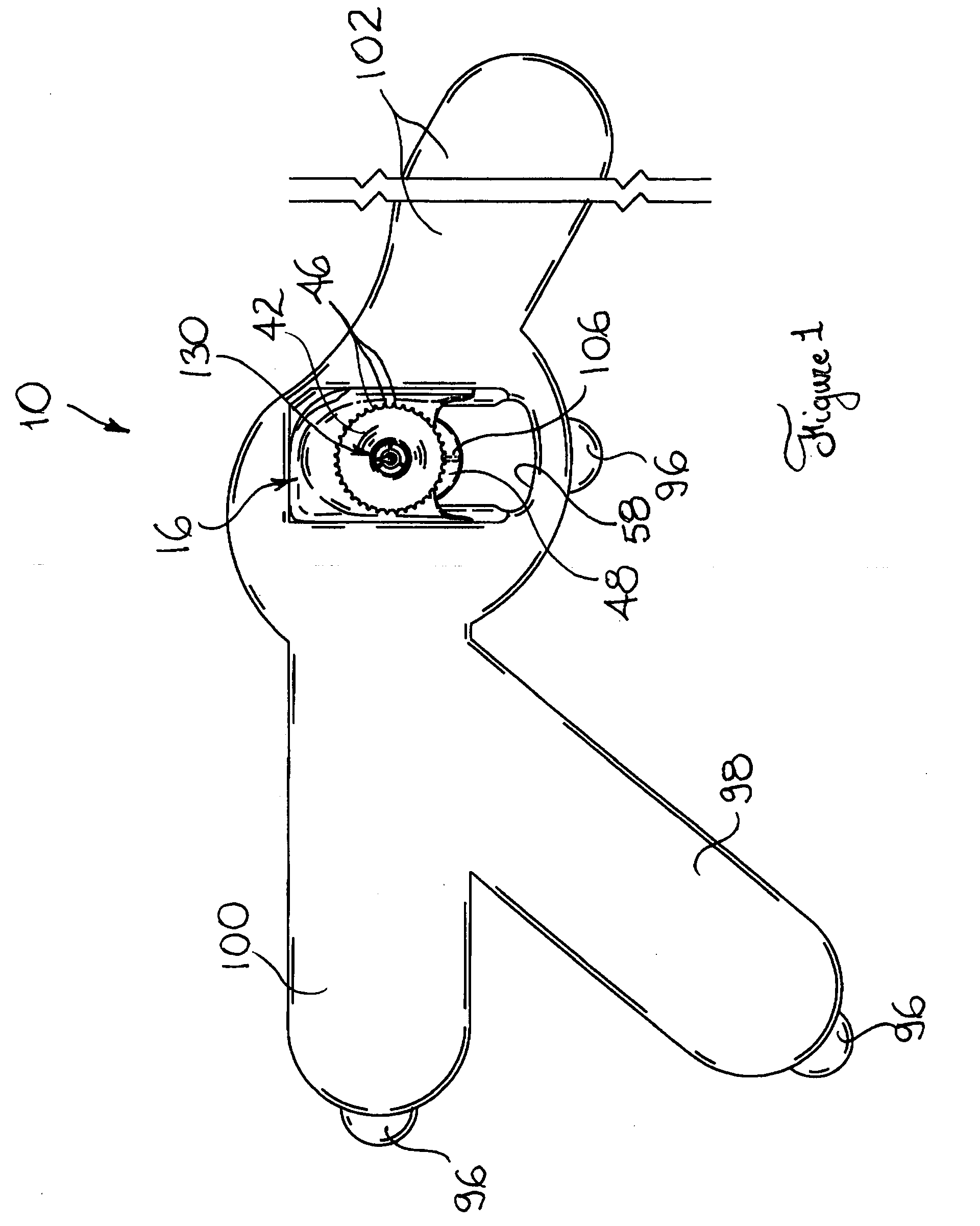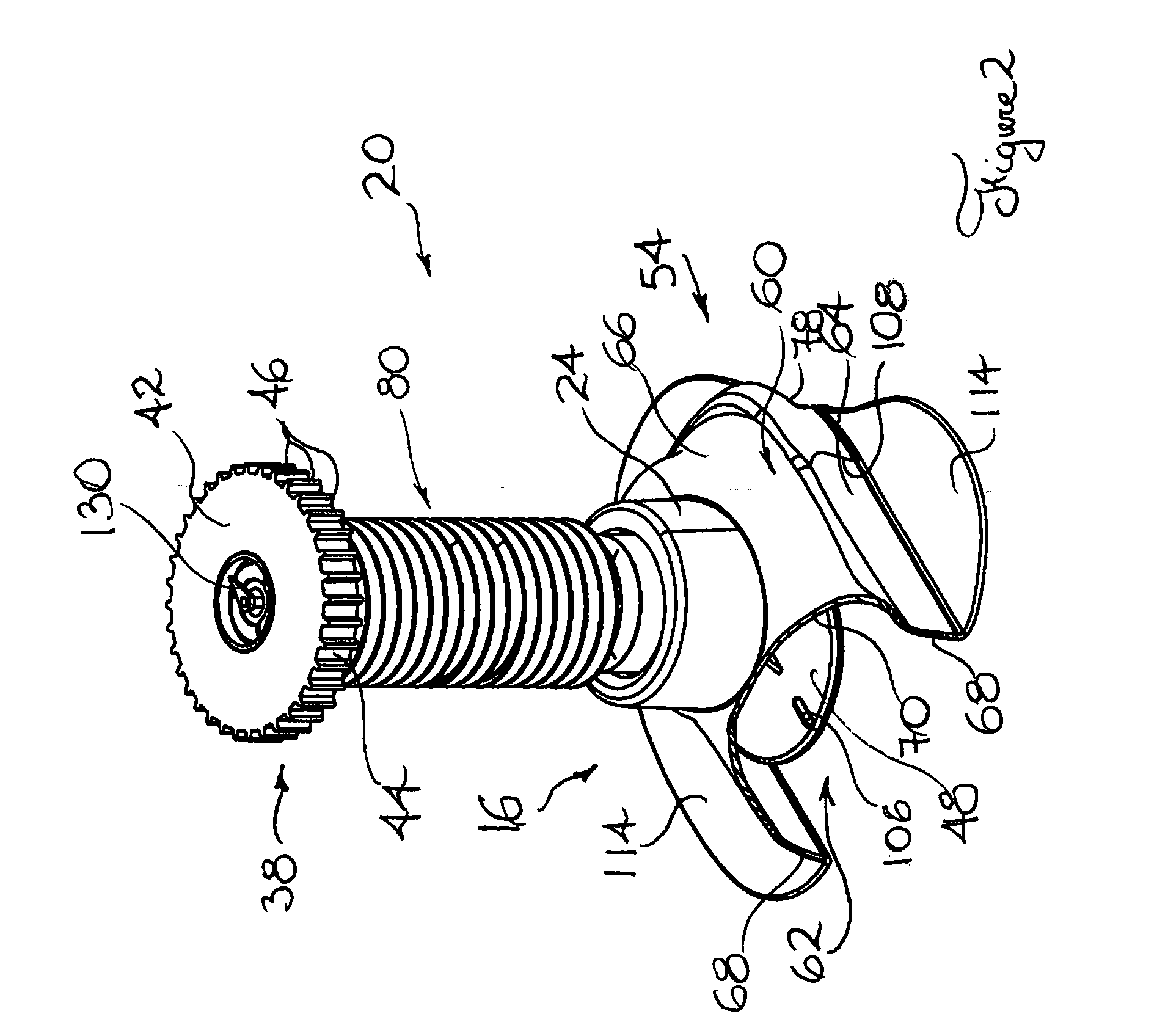Styptic device
a technology of styptic device and percutaneous vascular puncture, which is applied in the field of medical devices, can solve the problemsenlargement of puncture site, and preventing bleeding, and achieves the effects of reducing the risk of haematoma, reducing the risk of infection, and reducing the occurrence of acute punctures
- Summary
- Abstract
- Description
- Claims
- Application Information
AI Technical Summary
Benefits of technology
Problems solved by technology
Method used
Image
Examples
Embodiment Construction
[0084] Referring to FIG. 27, there is shown a styptic device in accordance with an embodiment of the present invention, generally indicated by the reference numeral 10. The styptic device 10 is intended to be used mainly for haemostatically sealing percutaneous vascular punctures. It should, however, be understood that the device 10 could be used in numerous other contexts as a guiding means, and / or pressure creating means, for respectively guiding the insertion of a medical or surgical tool during insertion thereof in a body tissue and / or exerting a predetermined pressure on a body site, without departing from the scope of the present invention.
[0085] Also, the styptic device 10 in accordance with the present invention is hereinafter disclosed mainly for use in the specific context of the cannulation of the femoral artery for the purpose of heart catheterization or coronary angioplasty. It should, however, be understood that the styptic device 10 could be designed for other types ...
PUM
 Login to View More
Login to View More Abstract
Description
Claims
Application Information
 Login to View More
Login to View More - R&D
- Intellectual Property
- Life Sciences
- Materials
- Tech Scout
- Unparalleled Data Quality
- Higher Quality Content
- 60% Fewer Hallucinations
Browse by: Latest US Patents, China's latest patents, Technical Efficacy Thesaurus, Application Domain, Technology Topic, Popular Technical Reports.
© 2025 PatSnap. All rights reserved.Legal|Privacy policy|Modern Slavery Act Transparency Statement|Sitemap|About US| Contact US: help@patsnap.com



